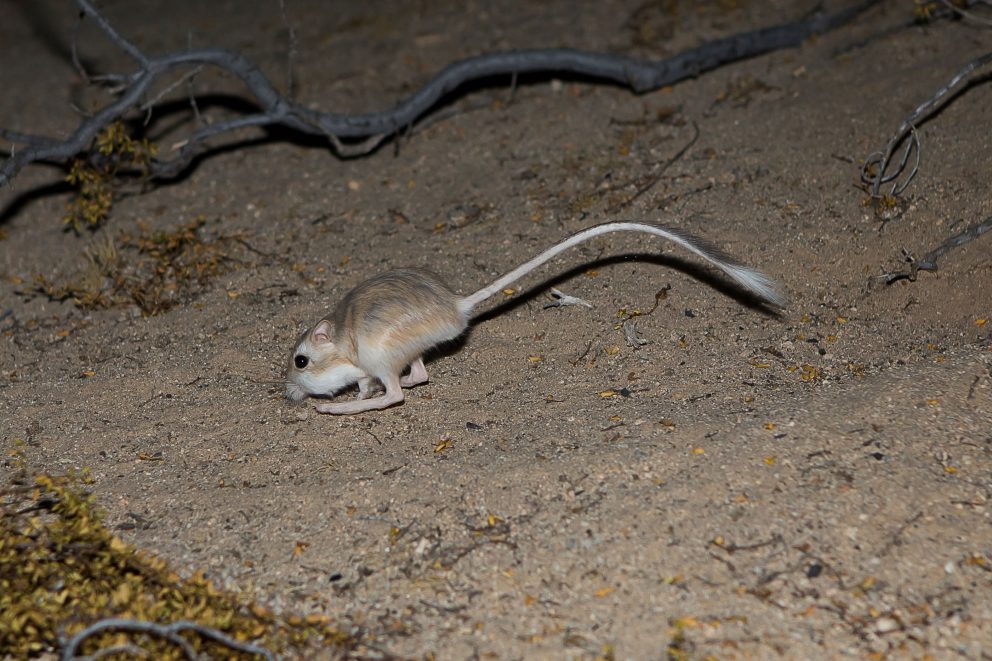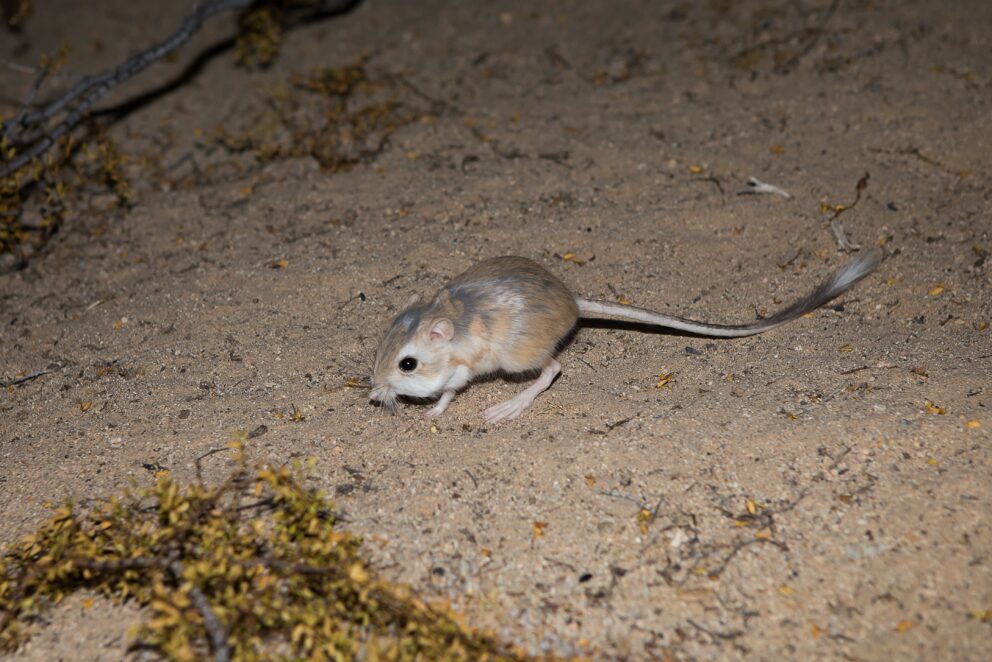- SCIENTIFIC NAME
- Dipodomys deserti
- CLASSIFICATION
- Mammal
- LIFE SPAN
- 5-8 Years
- SIZE
- 12.5-13.5” | 0.2-0.3lbs
- STATE CONSERVATION STATUS
-
- State Protected
- FEDERAL CONSERVATION STATUS
- Least Concern
- GAME STATUS
- Non-Game
- GAME TYPE
- None
- Washoe
- Humboldt
- Pershing
- Churchill
- Mineral
- Lyon
- Douglas
- Carson City
- Storey
- Elko
- Lander
- Eureka
- White Pine
- Esmeralda
- Nye
- Lincoln
- Clark
Habitat & Range
The Desert Kangaroo Rat lives in the desert flatlands, creosote scattered flats, and sandy soils in desert washes. They burrow into the loose soil to escape the harsh heat and dangerous desert environment.
- Cold desert shrubland and sagebrush
- Mojave desert
- Sand Dunes
Threats
- Habitat Degradation
- Predation
- Urban Development
Natural History
Desert Kangaroo Rats will use their strong and large back feet to travel out to forage for seeds. Not much is known on whether they cache their food or not, but they do possess the external cheek pouches that other subspecies of Kangaroo Rats have. Their favorite foods are dried leaves from sage, creosote seeds, and other seeds. They are able to survive long periods without a water source even with their preference for dried plant material. These rodents are mostly nocturnal and live their lives in underground burrows. They have been observed out of their burrows in the daylight. Their burrows only have one occupant except when a female has a litter. Even though Desert Kangaroo Rats are particularly aggressive, they halt their aggression for mating. Reproductive activity typically lasts from January through July. Litters consist of one to six young, called “pups,” and they have one or two litters per year. Pups are born completely helpless with pink, translucent skin and are ready to be weaned from their mother in only about 21 days! Shortly after birth, the mother will kick sand on its newborn pups, probably to dry them off.
Fun Facts














